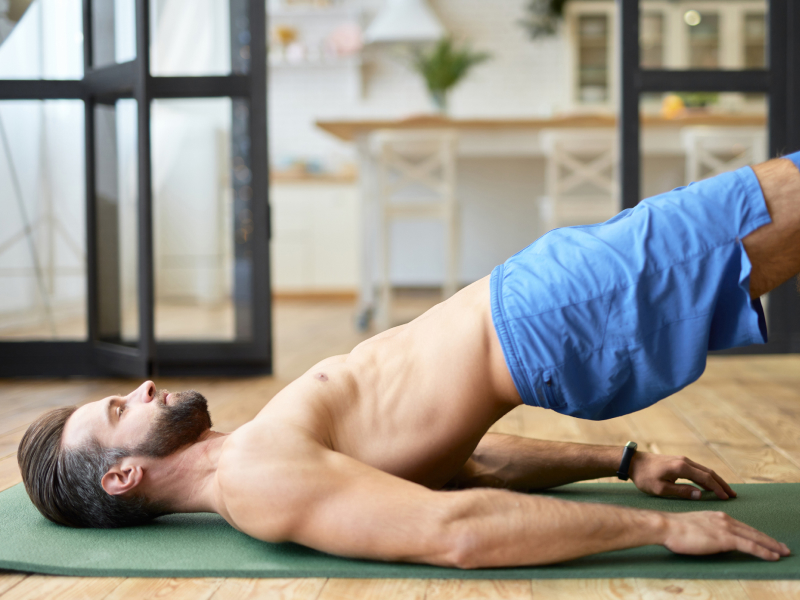Hear an orthopedist’s perspective on hiking and what you can do to keep your joints healthy – whether training for fall trail hikes or recovering from summer back-packing sprains or tears.
5 Short, Hard Truths About Hiking
1. You’re harming yourself if you don’t bring water with you (and drink it).
Water is a non-negotiable when packing for your next hike. A definite must. For tips about how much to take with you and how much to drink to replenish the fluids you lose, check out our hydration article. H2O helps lubricate and cushion joints, regulate body temp, and protect your tissues. And it’s portable!
2. Stretching isn’t helpful (unless you warm up first).
CAUTION: Never stretch when your muscles are cold. Always do a light warm-up first – try taking a brisk 10-minute walk – to loosen up all your joints, ligaments, and tendons around your muscles. Then do a stretching routine. Flexibility helps us move better and makes trekking across irregular terrain easier.
I recommend my patients stretch to stay limber and nimble and help avoid orthopedic injury or trauma. Start with 3 days a week and work up!
3. Low impact may be more your gig.
While we can’t beat the benefits of getting out in the woods and breathing fresh mountain air, hiking isn’t for everyone. If you’re suffering from arthritis or chronic pain, your best choices for exercise are physical activities that do NOT pound your joints. You can still drive to the mountains, go for walks in the park, or camp in the great outdoors!

If hiking isn’t possible, you might try walking or swimming.
Talk with your doctor about exercises that are a better fit for you. I advise targeted strength training for my patients to help you grow stronger muscles, build your resilience, and give your joints improved support. TIP: If you are experiencing joint pain, you’ll want to avoid quick, repetitive movements!
4. You gotta do some things BEFORE you hit the trail.
Besides packing a water bottle, planning your route, ensuring you have proper footwear and basic first aid supplies, take the time to do the necessary exercises to power up your core.

Stronger abs and back muscles help us balance better so we’re less likely to fall or get injured when hiking.
Pilates and yoga are great workouts that help strengthen the core muscles; along with planks, wall-sits, and bridges. TIP: For beginners, start by practicing any form of plank exercise against the WALL vs. the floor. This works for side planks, mountain climbers, long planks, straight-arm planks, and bird dogs!
5. You’ll get back on the trail faster with regenerative medicine.
Plenty of people get injured while hiking. If it isn’t dehydration, sunburn, or a bug bite, you could very easily tear a ligament, sprain a tendon, or twist an ankle. Both preparation for recreational sports and recovery from hiking injuries happen faster with regenerative medicine.

Our regenerative treatments heal & repair ligament and tendon damage and mitigate pain without surgery, steroids, or more medications.
Accelerated Healing without Extensive Recovery Time
Whether you’re suffering from joint, ligament, muscle or tendon damage, you can get amazing relief from painful knee, shoulder, low back, or hip injuries, and even from chronic conditions like osteoarthritis with NW Regen. Regenerative orthopedic therapies amplify your body’s innate healing abilities to:
- Speed recovery,
- Encourage tissue repair, and
- Reverse and heal degenerative conditions.
At NW Regen, we use minimally-invasive, non-surgical regenerative injections for the repair of damaged tendons, ligaments, and joints. Talk with us about personalized and precise ultrasound-guided injection therapies to naturally regenerate your tissue and get back out on the trail with a healthier body.
More Info about Regenerative Orthopedics
Click to visit our website for more info on:

Dr. Ryan Wood is a licensed Naturopathic and Chiropractic physician focusing on interventional orthopedic and orthobiologic medicine and injection therapies as well as general musculoskeletal and non-surgical orthopedic medicine.
With almost two decades of orthopedic practice across multiple disciplines, he has the necessary experience to ensure proper diagnoses and management of complex cases.


